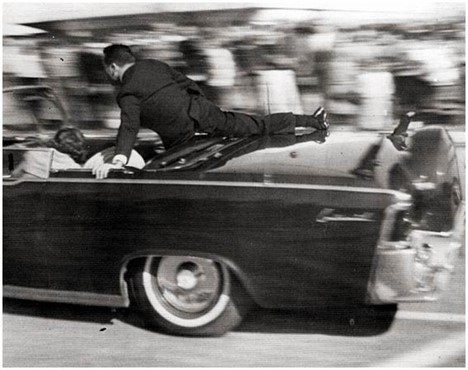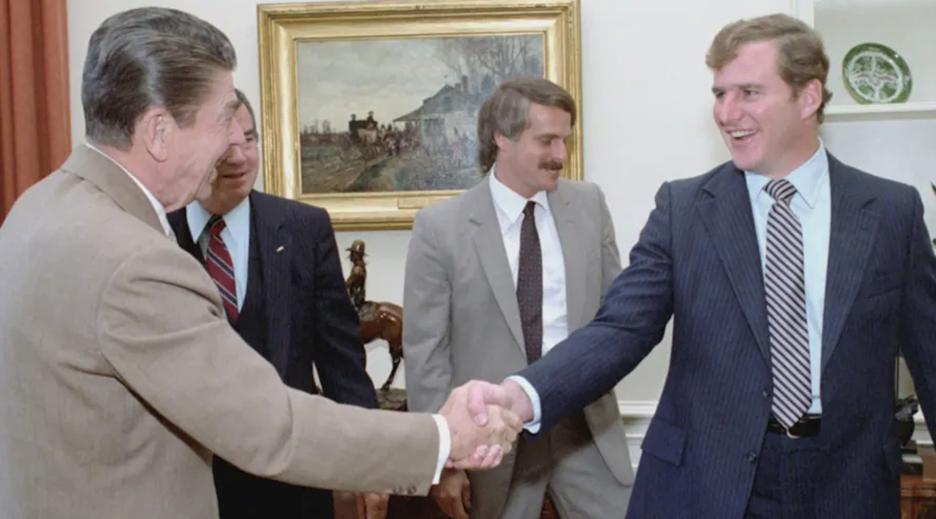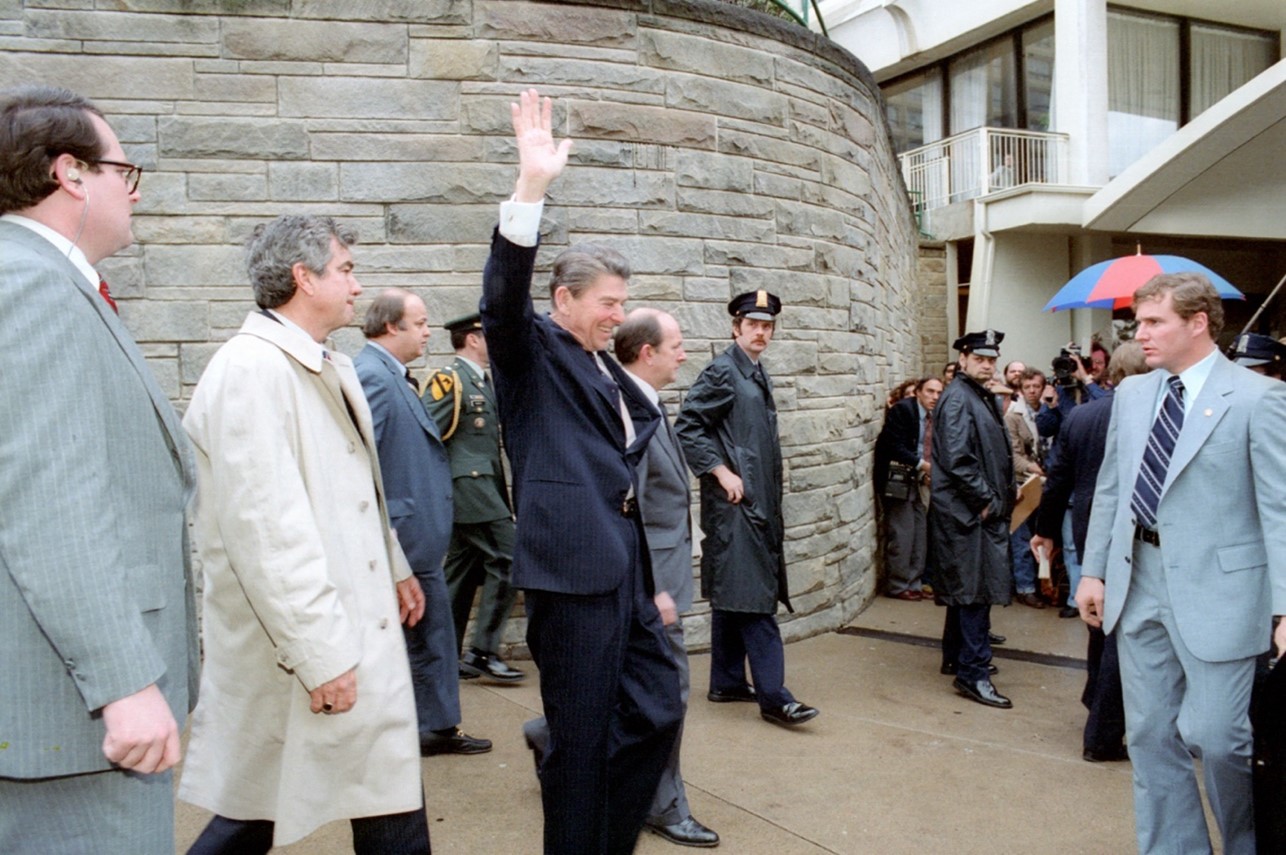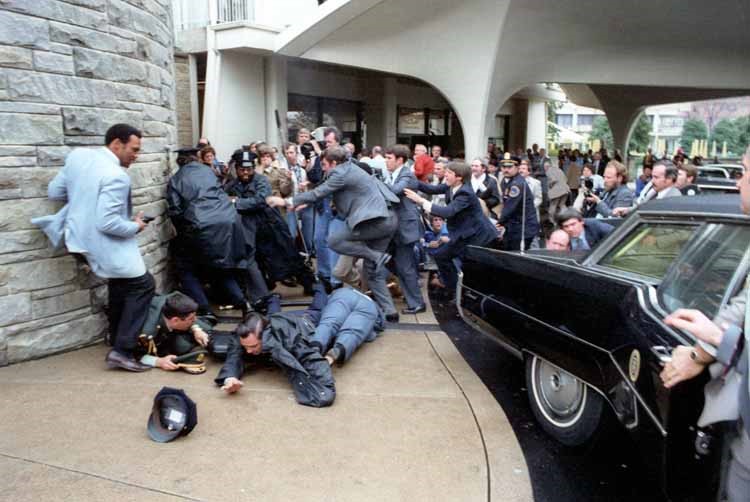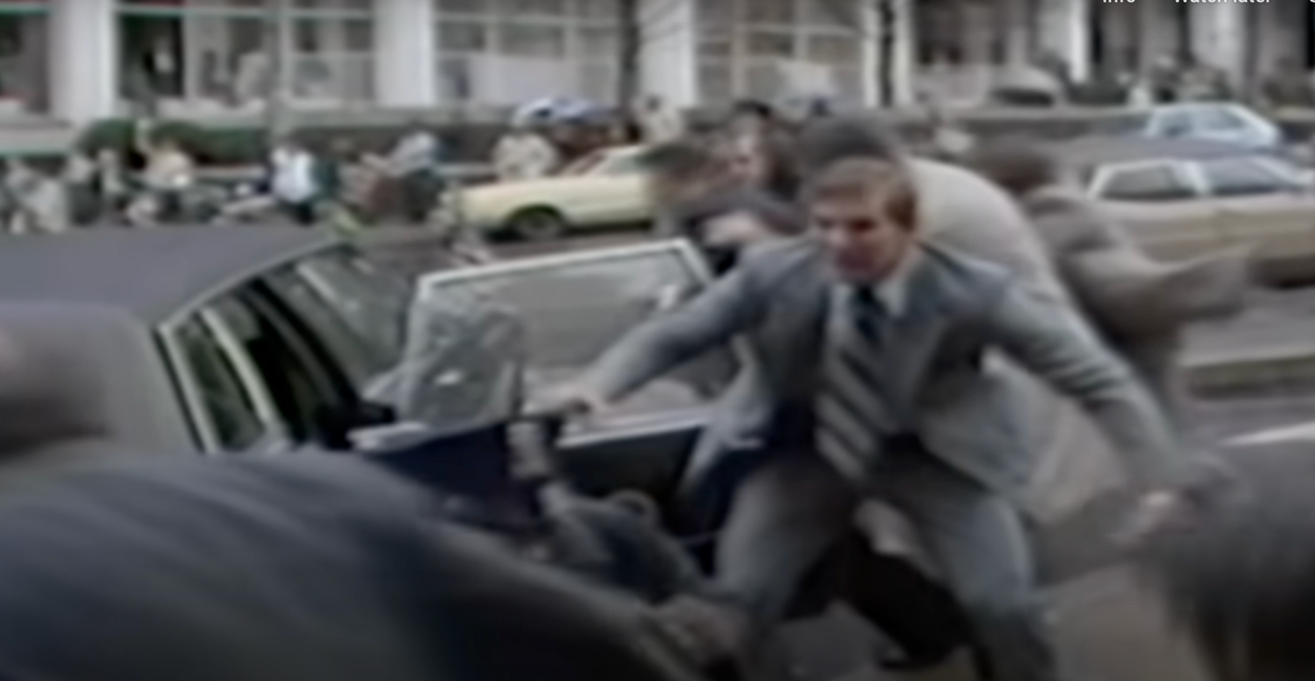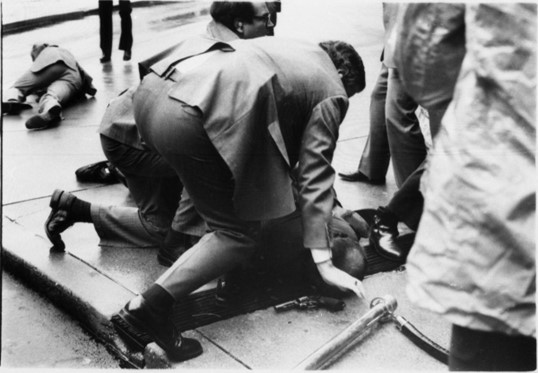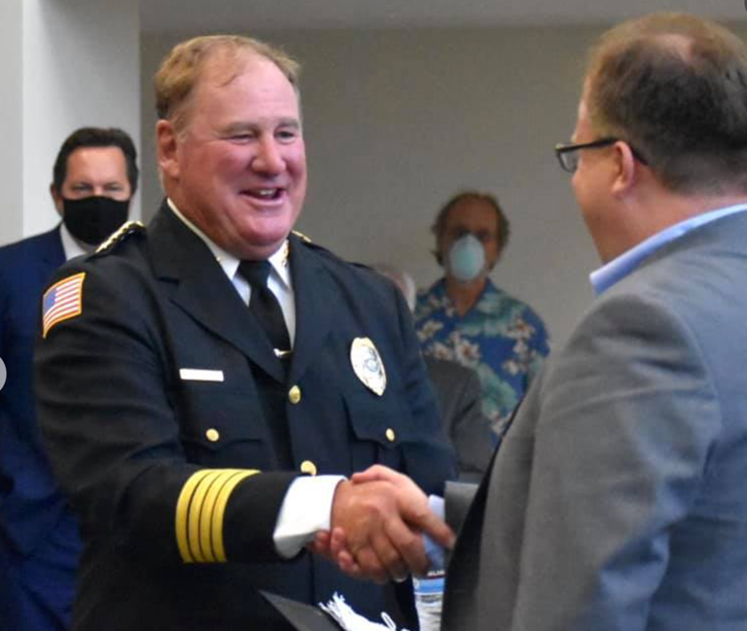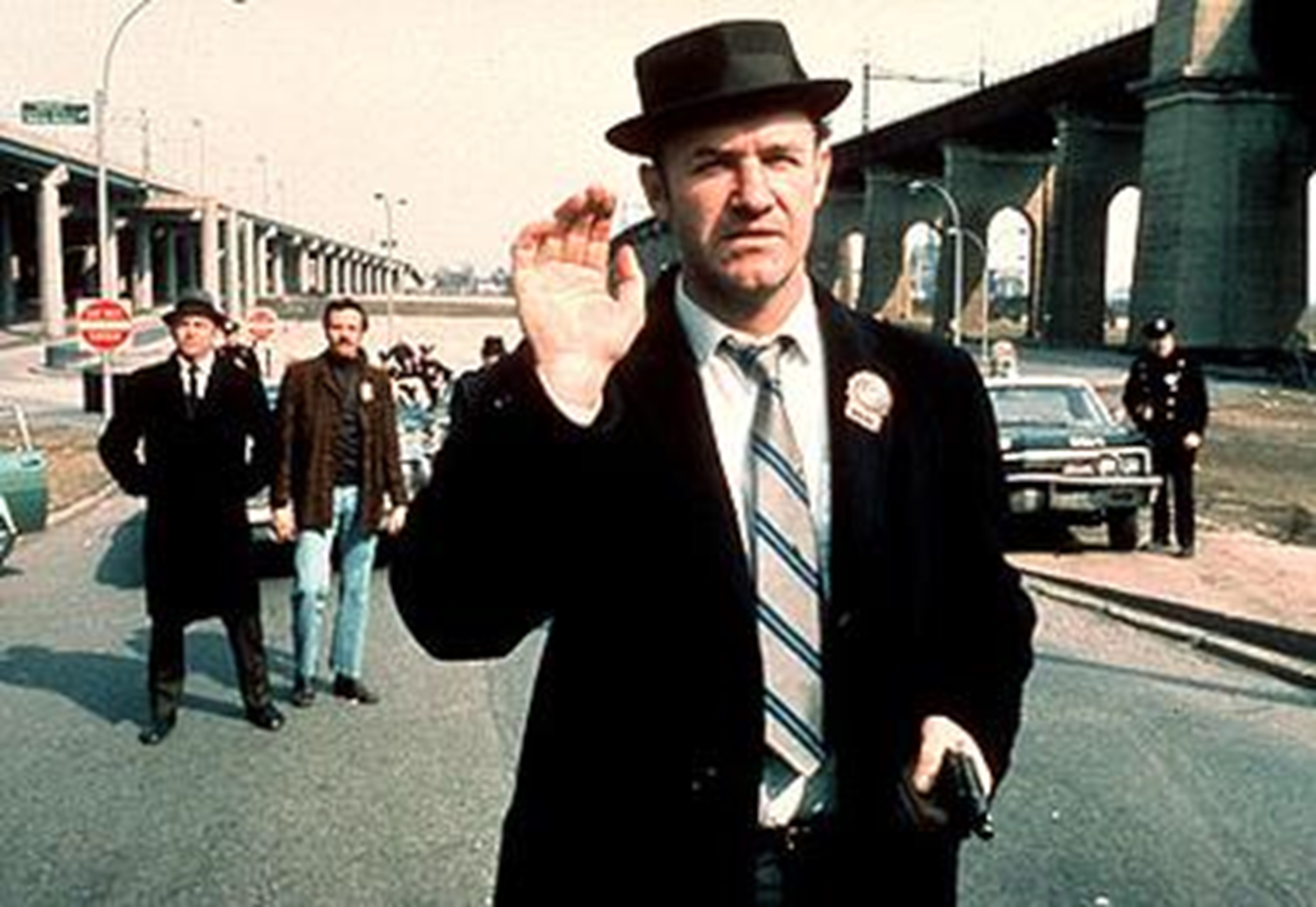|
March 1, 2025 Courage under fire
PERF members, Last Friday, Clint Hill, a Secret Service agent who was protecting President John F. Kennedy on the day he was assassinated in Dallas, passed away at the age of 93. Hill reacted quickly to jump onto the president’s car after the shooting, moving the first lady into a safer position as the car drove away. He spent decades believing events could have turned out differently if he had reacted faster, but his colleagues had great respect for his actions that day.
Secret Service Agent Clint Hill shielding the occupants of President Kennedy's limousine. Source: Justin Newman/Wikimedia Commons When I heard of Hill’s death, I was reminded of another Secret Service agent protecting a president during an assassination attempt. Shortly after I started at PERF, a chief from Orland Park, Illinois, named Tim McCarthy became a member. I recognized the name and realized he was the agent who had been shot during John Hinckley, Jr.’s attempted assassination of Ronald Reagan in 1981. I reached out to him when he joined PERF to tell him how much respect I had for his Secret Service career and that we were fortunate to have him as a member. Chief McCarthy spent 22 years with the Secret Service, ending his tenure as the special agent in charge of the Chicago Field Division from 1989 to 1993. He then served as chief of police in Orland Park from 1994 to 2020. This week I wanted to check back in with him to hear about his career in the Secret Service and in local policing. Chuck Wexler: Why did you want to go into the Secret Service? Chief McCarthy: My father was a Chicago police sergeant. I went to the University of Illinois and started out in engineering, then ended up in finance. My senior year, I started interviewing with a lot of companies in and around the Chicagoland area. With my father being in law enforcement, I interviewed with the FBI and the Secret Service and applied to take the test for the Chicago Police Department. The Secret Service had me take a test, which I passed, then did the background check and offered me a job. Leaving college, you’re always looking for that first job. I was happy and anxious and proud to accept a position with the Secret Service in Chicago, which was home. Wexler: What were your aspirations when you joined? Chief McCarthy: I aspired to be a 25-year employee in the Chicago Field Office and not go to Washington, D.C. My wife, her whole family, and my family were all from Chicago, so I had no interest in going to D.C. at that time. We did investigations into counterfeiting, and even bigger than that was fraud involving government checks and bonds. At the time, they still mailed checks for Social Security and IRS refunds, so thousands and thousands of checks were being stolen, forged, and cashed every year. We worked the streets with detectives from Chicago and the suburbs. I was transferred to the Presidential Protective Division after about seven years. I was going to leave the Secret Service, because we had a young family and I didn’t want to go to Washington, D.C. But I sat down with my dad, and he said, “You signed up for this, and you knew it included going to Washington.” And he was right. So we packed up and moved to Washington. The first year I was protecting President Carter, then President Reagan.
President Ronald Reagan shakes hands with McCarthy. Source: White House. I transferred four times in the Secret Service, and it’s tough. You uproot your family, sell your house, and buy a new house. I was transferred to Washington, then back to Chicago for about two years, then back to Washington for four years, then back to Chicago one more time. Wexler: Tell me about March 30, 1981. Chief McCarthy: The president was speaking to a building trades group. We went over all the intelligence, motorcade routes, alternate routes, security measures at the Hilton, the hospital to go to if things went badly, and where the equipment and safe rooms were. We left the White House and it was raining, so we got wet, which was no big deal. The president gave his speech, which I felt received a warm welcome. He was in his first 100 days as president and on a tight schedule, so we were proceeding directly to the armored car. One of my responsibilities was to ensure the car door was open when we got there. That was also the responsibility of the site advance agent, and it was open. Just about when we got to the car, John Hinckley pushed himself forward and fired six rounds in 1.4 seconds out of a revolver, not a semiautomatic. He hit [Washington (D.C.) Metropolitan Police Department Officer] Tom Delahanty in the back of the neck. He hit [White House press secretary] Jim Brady almost between his eyes and forehead. I was hit in the right chest. Another round ricocheted off the right rear quarter panel of the car and, as [Secret Service Special Agent in Charge] Jerry Parr and [Secret Service Agent] Ray Shaddick were pushing the president into the car, hit the president under his left arm. Another round went through a window across the street. A gentleman from Cleveland who was attending the meeting jumped on Hinckley’s back, which I think caused that round to go across the street. Jim Brady was probably the most seriously injured and later died of his injuries. It was a homicide. However, John Hinckley had been found not guilty by reason of insanity. He spent a lot of years in St. Elizabeth’s Hospital in Washington, D.C., and has since been released. Wexler: So you put yourself between the president and the shooter? Chief McCarthy: Yes, which helped save the president because other agents did what they were supposed to do too. We have training. There are a couple of theories you use when protecting the president. One is “cover and evacuate,” which we did. I helped cover the president, and others evacuated him. Then there’s the “arm’s reach” theory, which says that if the threat is within arm’s reach with a weapon, you go for the weapon. This was back before we used metal detectors, and it was a shame that it was that way.
Secret Service Agents Jerry Parr (second from left) and McCarthy (far right) escort President Reagan just moments before the attempted assassin opened fire. Source: Ronald Reagan Presidential Library and Museum.
Agent McCarthy shields the president from gunfire as he is rushed into the presidential limousine. Source: NBC archival footage
Wexler: Then you, the president, and Jim Brady were taken to George Washington University Hospital. Can you talk about meeting President Reagan in the hospital? Chief McCarthy: I was out of the hospital in about 11 days. Back in those days I was running five miles a day and lifting weights, so that’s probably why I recovered as quickly as I did. On the last day I was there, I received a message that the president would like me, my wife, and my two children to come to his room to have a short conversation. We went to the room and Mrs. Reagan was there. I was having a great conversation with the president and my wife was talking to Mrs. Reagan. But my wife was getting nervous because our children were young, the president was hooked up to a lot of machines that were flashing, and the kids were going after those machines. There weren’t any nurses or anyone else in the room watching. So my wife was panicking and said it was time to say our goodbyes. As we were leaving, the president joked, “It was McCarthy, Reagan, Delahanty, and Brady. What the hell did this guy have against the Irish?” Wexler: What changed after this incident? Chief McCarthy: It became almost 100 percent covered arrivals and departures. The Washington Hilton actually built a garage to pull the armored limo into. We don’t like parking garages because you can get caught inside them. But in almost all cases, it’s covered arrivals, whether it’s a garage or a tent. Wexler: Let’s move forward to when you retired from the Secret Service and became the police chief in Orland Park, Illinois. What made you want to get into local policing? Chief McCarthy: I knew a lot of police chiefs in the area. When I retired from the Secret Service, I took a job with a security company and was making a ton of money. But when the police chief position opened in Orland Park, where I lived, maybe a half dozen of my police chief friends called me up and said they heard I was applying to be chief. I hadn’t even known there was a vacancy. I talked to my wife, and she could see I wasn’t happy with the security company, so I went through the interview process and was selected.
McCarthy during his time as Orland Park police chief. Source: Village of Orland Park/Facebook. Wexler: How did being a local police chief differ from being in the Secret Service? Chief McCarthy: It’s a completely different culture. Criminal investigations are the same. But patrol is the backbone of police departments. While with the Secret Service I was in the Senior Executive Service, so I had a tremendous amount of management and media training, which helped. But there is a transition. I was a regular attendee at meetings of the South Suburban chiefs and Illinois chiefs, because I knew I had to learn. And at that time I joined PERF. Wexler: Why did you join PERF? Chief McCarthy: I needed to learn, plain and simple. I needed to learn the best policies and best practices, and I found a lot of them in the PERF publications. You don’t have to invent the wheel on everything, so you get great ideas and ideas that have been proven. Wexler: What did you learn from your 26 years as a police chief? Chief McCarthy: You’re responsible for everything, from leaves blowing from one house’s grass to someone else’s, to homicide, to everything in between. And you’re responsible for dispatch, emergency services, patrol, investigations, lock-up, evidence, everything. You handle citizen complaints and deal with the press on a far more regular basis. You also deal with unions, which can be tough. Sometimes you have to dig your heels into the ground. Arbitration is tough, but you have to do what you have to do. I had to fire police officers and go through arbitration. It can be tough. You run into some tough situations, like misconduct by your own, that you have to deal with effectively. Promotions are important. I was fortunate in my department that sergeant was civil service, but lieutenant, commander, and deputy chief were appointed by me. I liked that as opposed to testing, because I should be held accountable for those appointments. Wexler: Did you face pushback coming in from the Secret Service? Chief McCarthy: Without a doubt. They had quite a bit of turmoil in the department before I got there, so I think there was some acceptance. But I wouldn’t tell you that I was greeted with open arms. I even had some command staff saying, “What does this guy know about local policing?” But I maintained my integrity for 26 years, and that meant a lot to command staff, patrol officers, and the unions. Wexler: Any final thoughts? Chief McCarthy: Under the right circumstances, being a chief of police is the best job in the world. You can really help people. You can put together your programs and help people. The Secret Service was great too, and I’m not comparing one against the other. The career I had and being shot in the line of duty like that are things I’ll never forget. I loved 50 years in law enforcement, and I wouldn’t have done it any other way. It’s just been an absolutely great career, between the Secret Service and being a chief of police. Thanks to Tim for taking the time to speak with me and share his unique experiences with our members. Earlier this week, former interim Secret Service director Ronald Rowe told me that if there was a Mount Rushmore of Secret Service agents, Clint Hill, Tim McCarthy, and Jerry Parr [the special agent in charge during the Reagan assassination attempt, who diverted the limousine to the hospital instead of returning to the White House—a decision that may have helped save the president’s life] would be on it. And former Secret Service director and current acting DHS Under Secretary for Management Randolph D. “Tex” Alles told me that “signing up to work for the Secret Service is an act of courage, knowing that some days doing your job means putting yourself in a position to save someone else. I have so much admiration for these courageous agents.” Finally, on a separate note, I want to acknowledge the passing of Gene Hackman. His car chase as NYPD Detective Jimmy “Popeye” Doyle in The French Connection is one of my favorite movie scenes (even if he doesn’t entirely comply with PERF’s vehicular pursuit guidelines).
Gene Hackman as Jimmy “Popeye” Doyle in The French Connection. Source: 20th Century Fox. Have a fantastic weekend! Best, Chuck |

